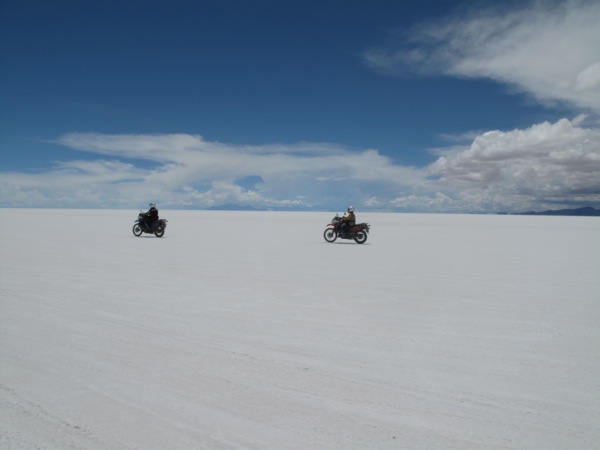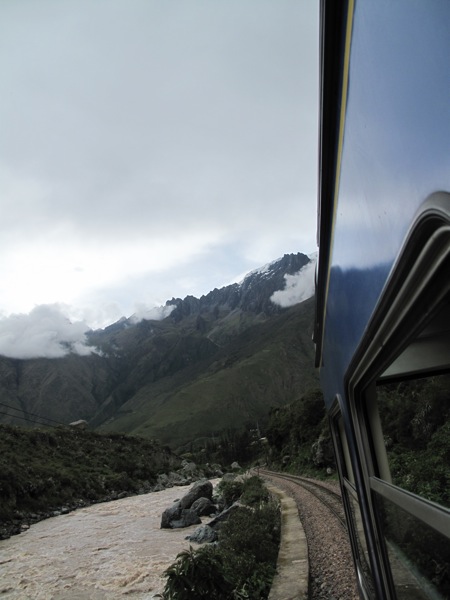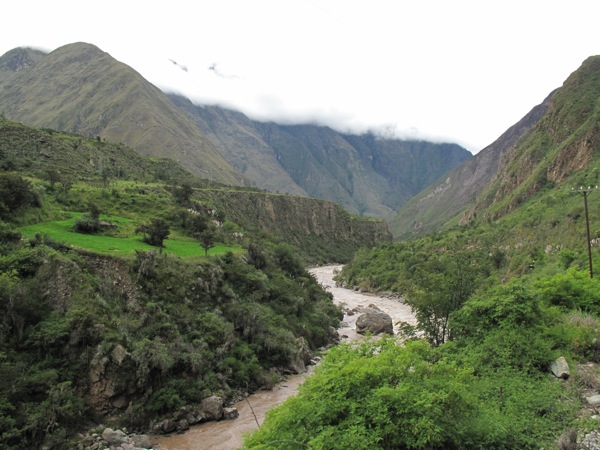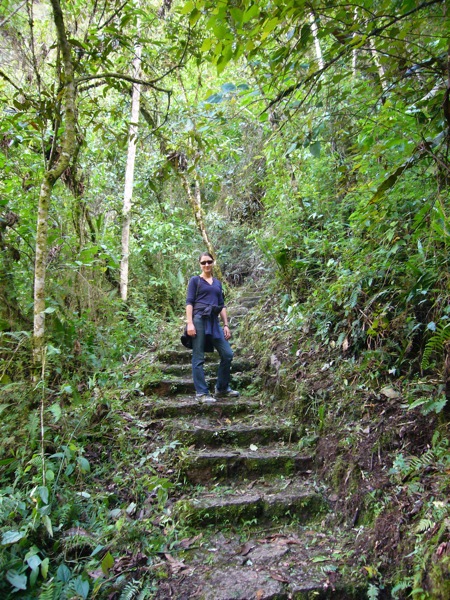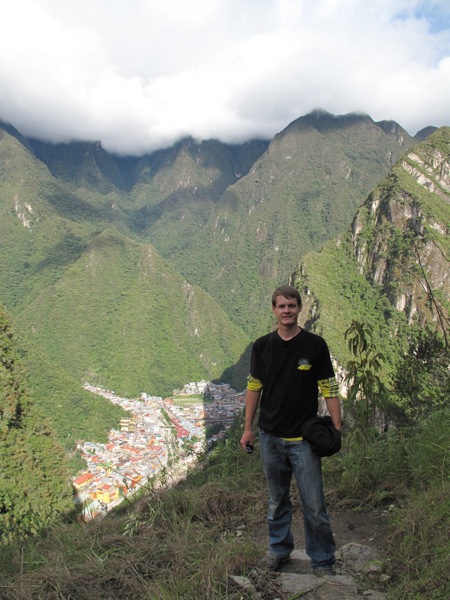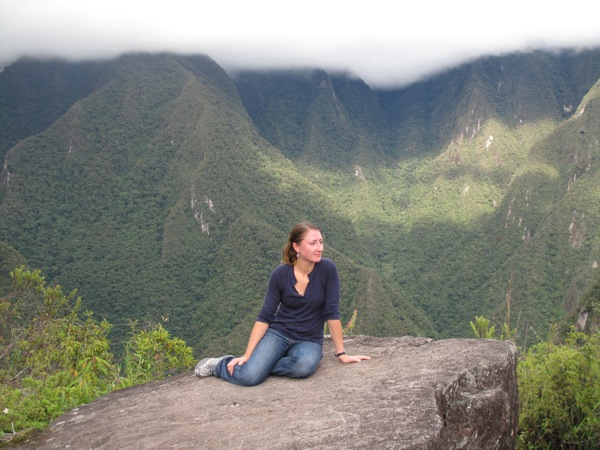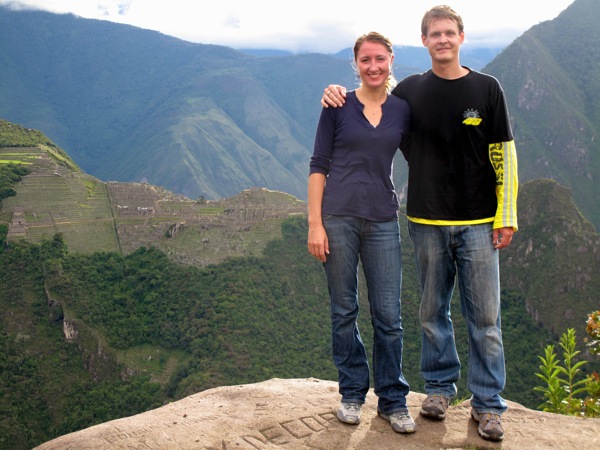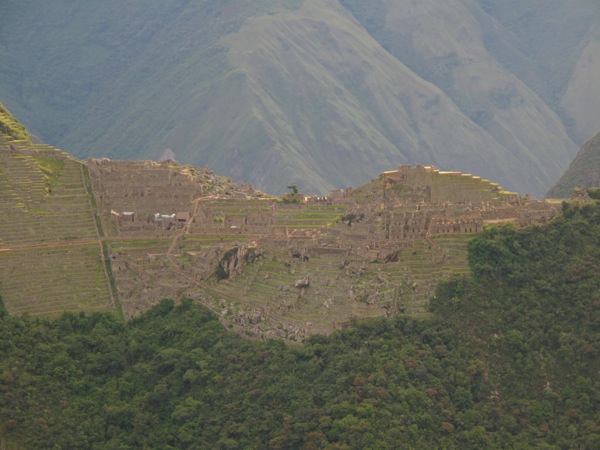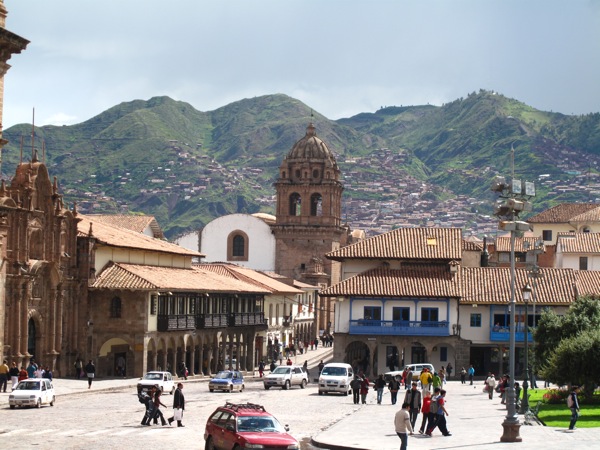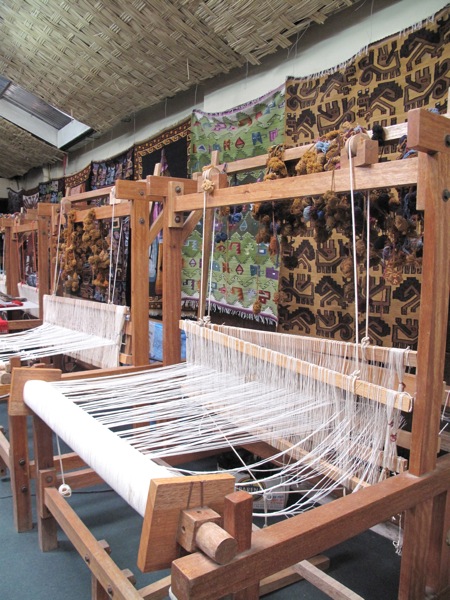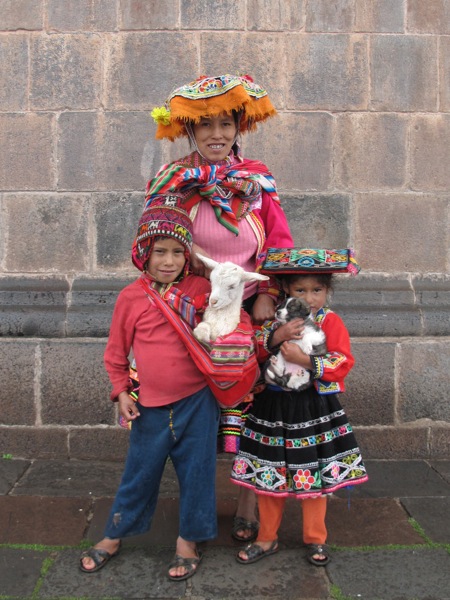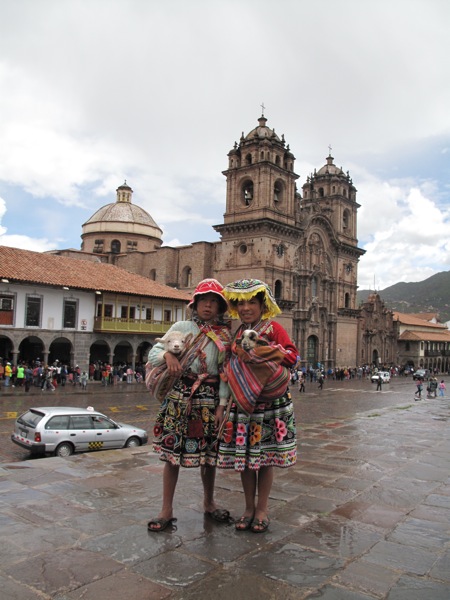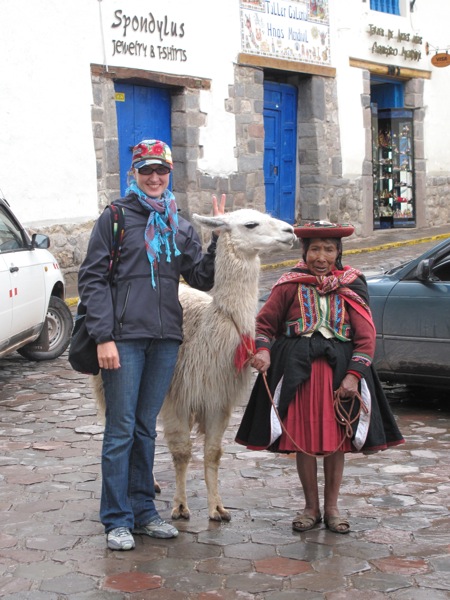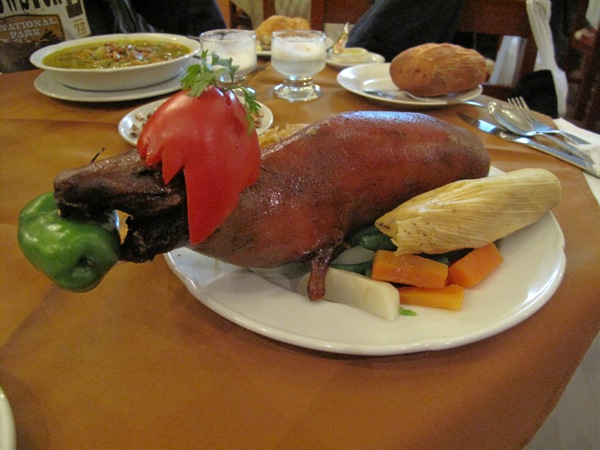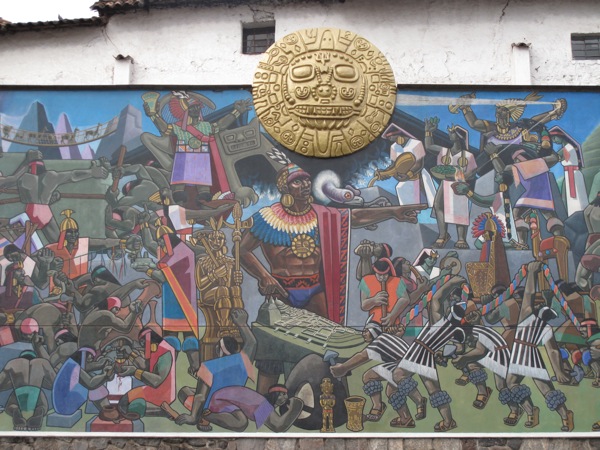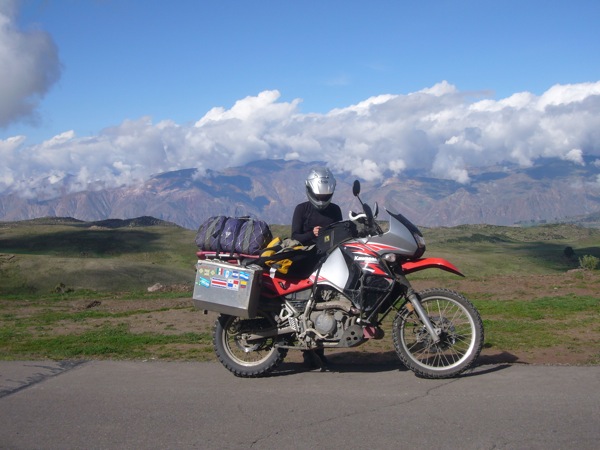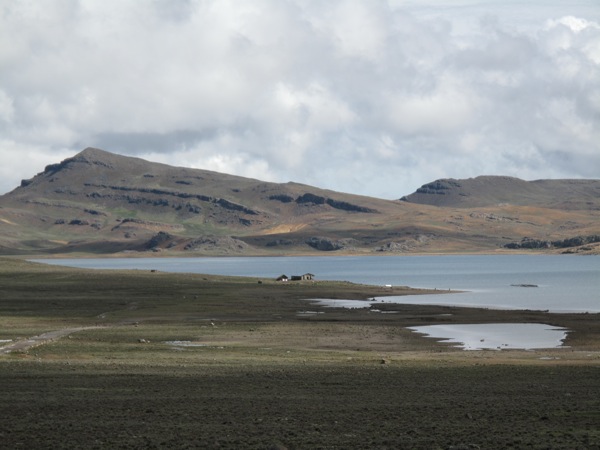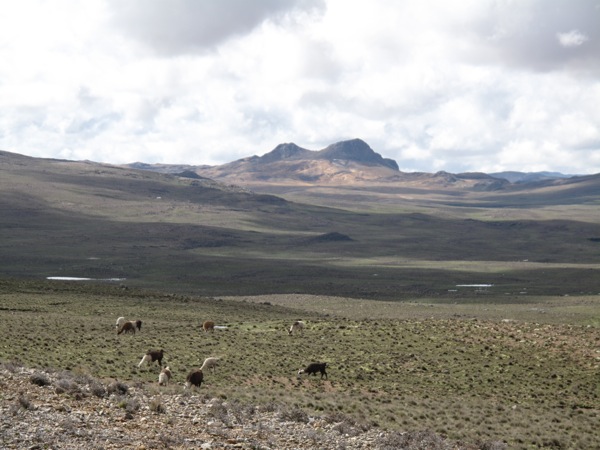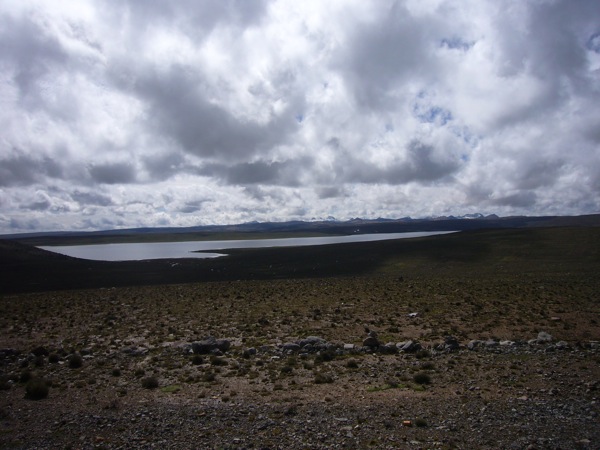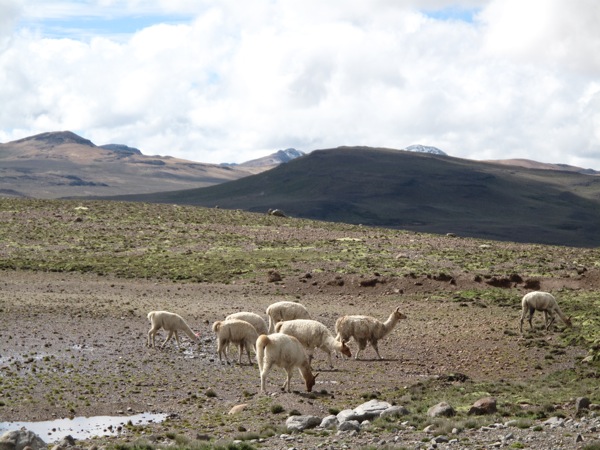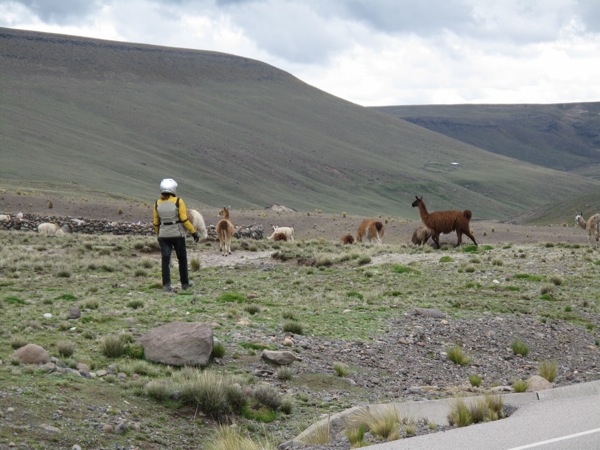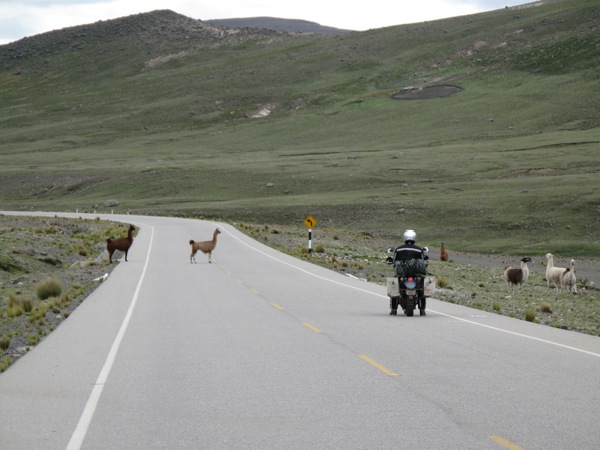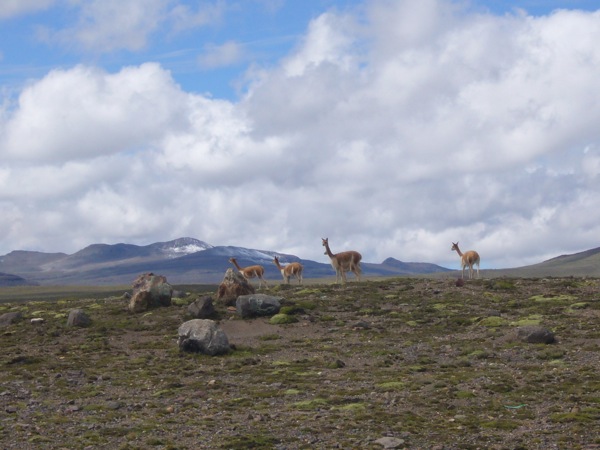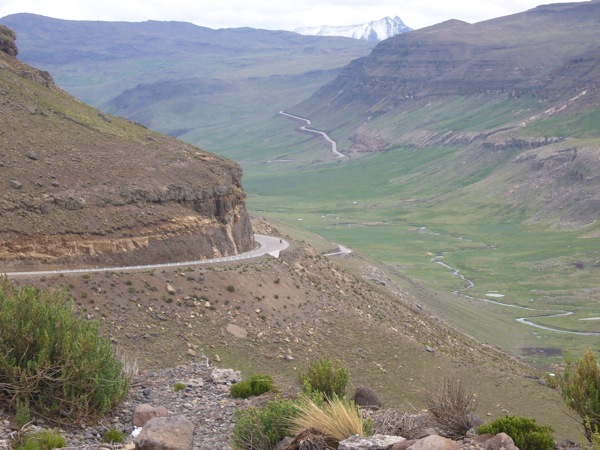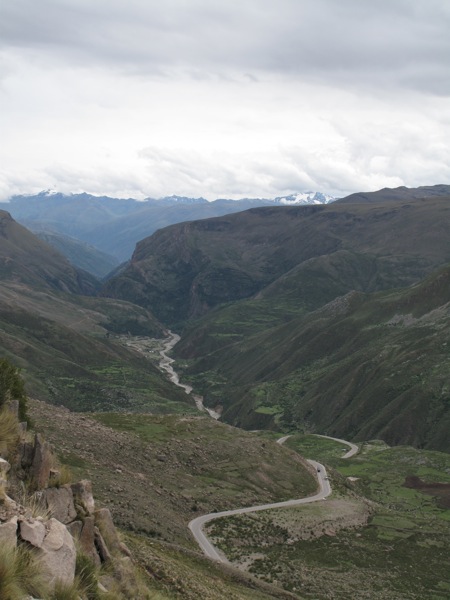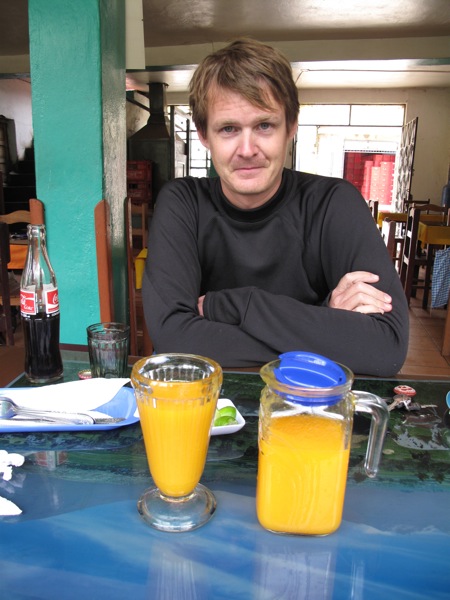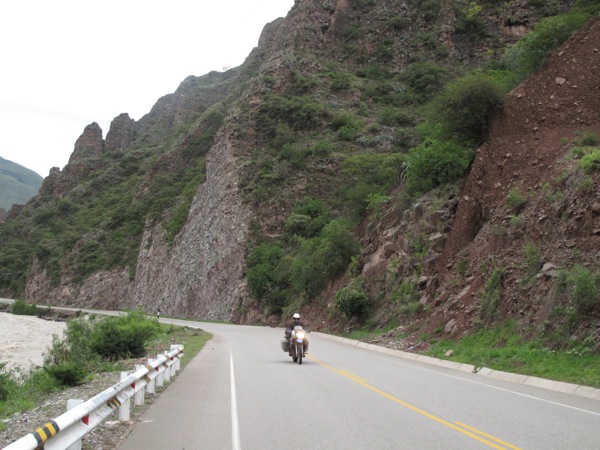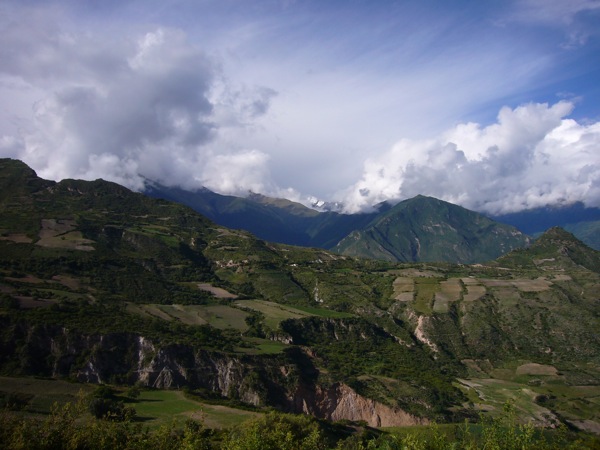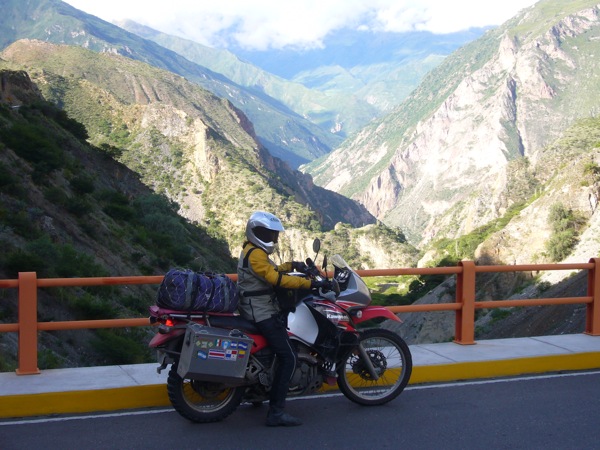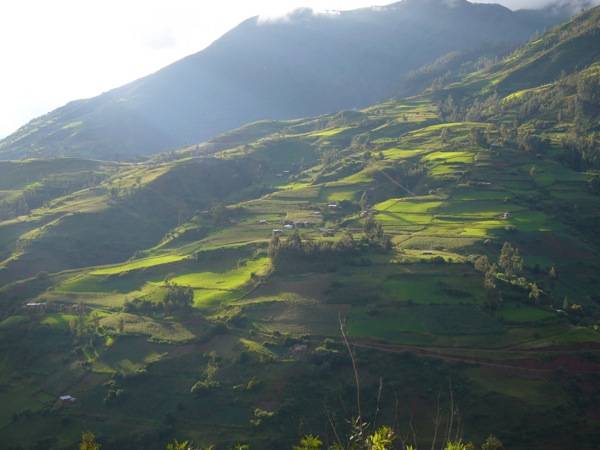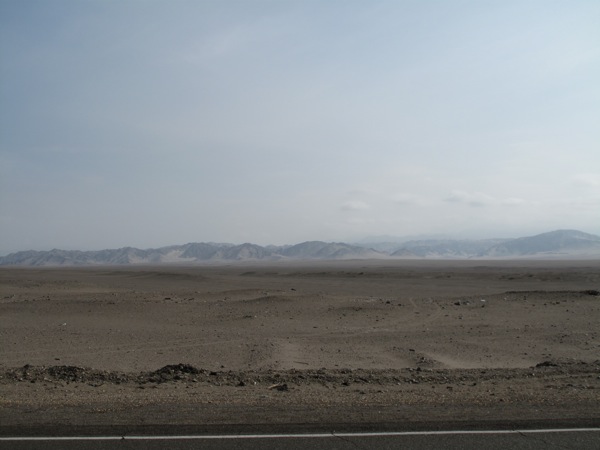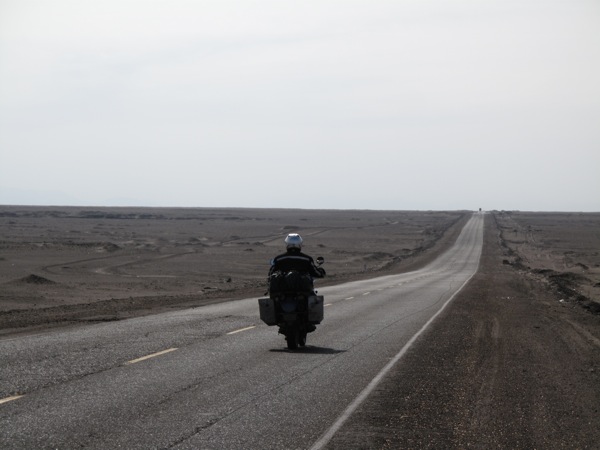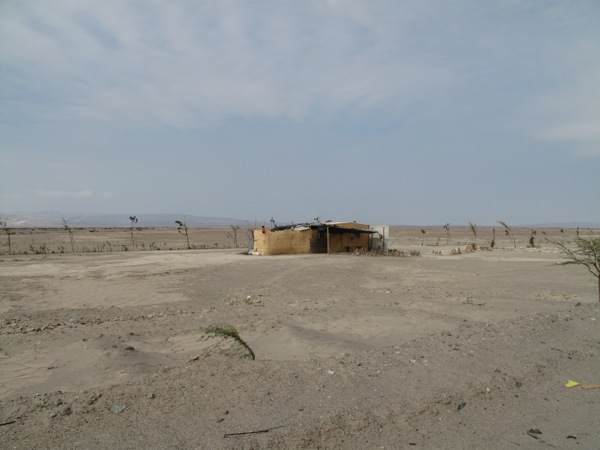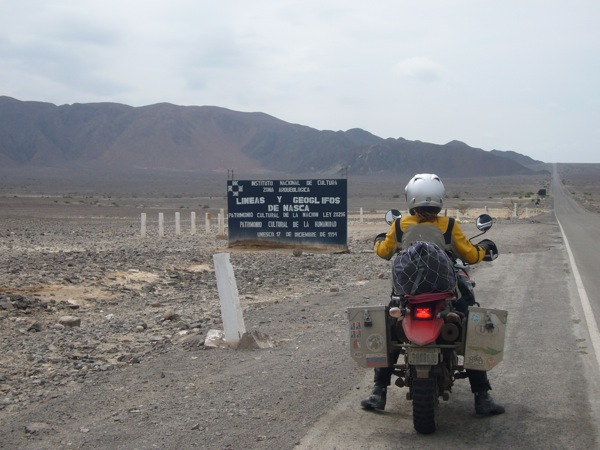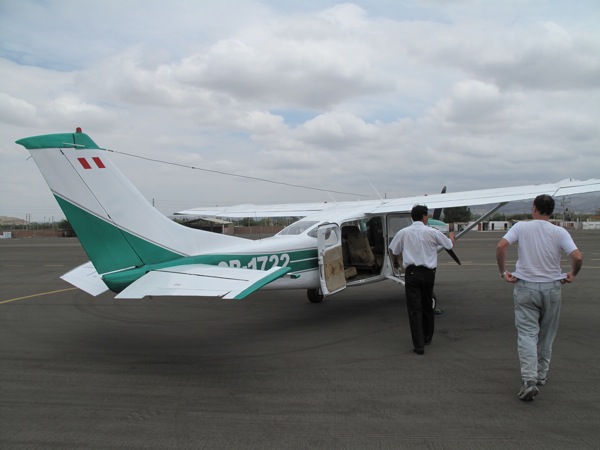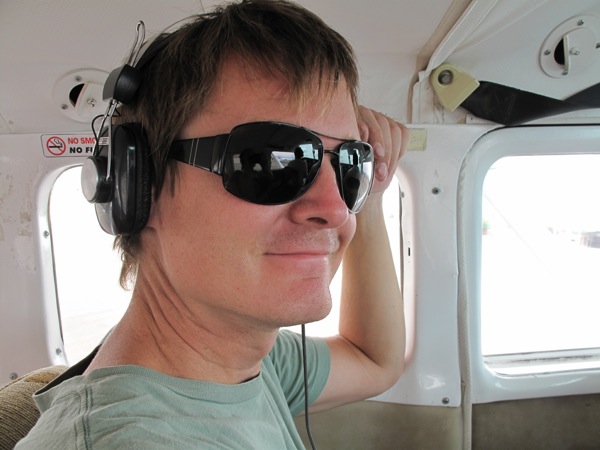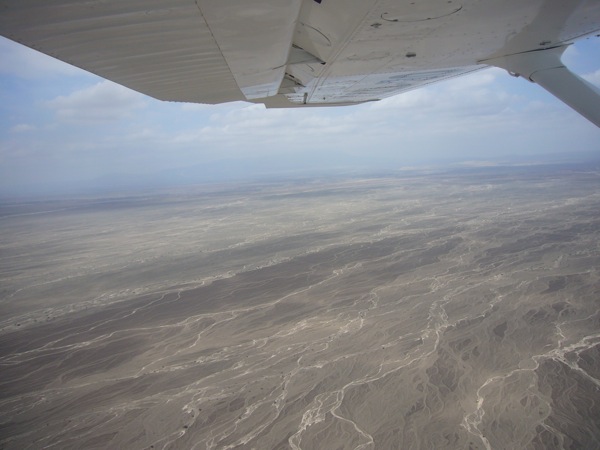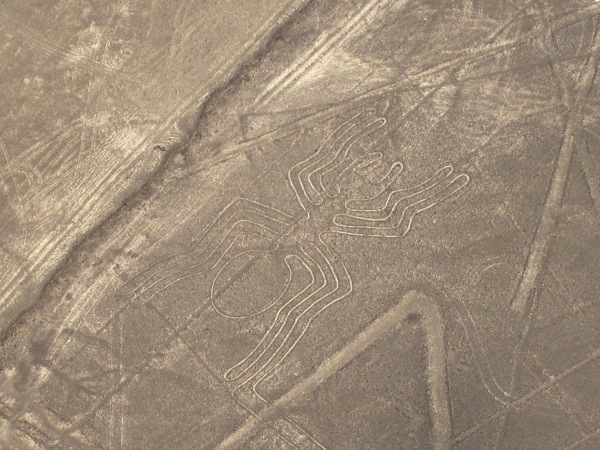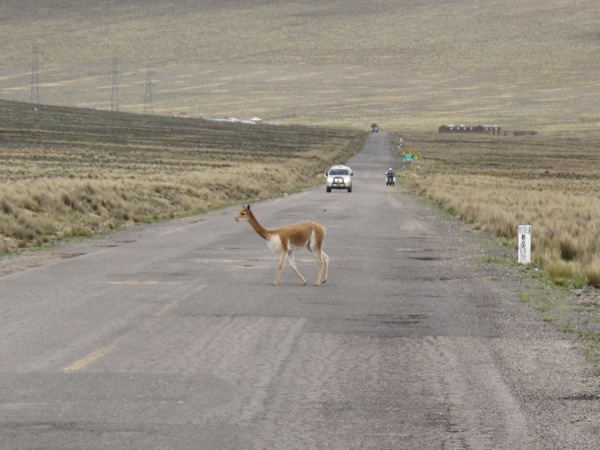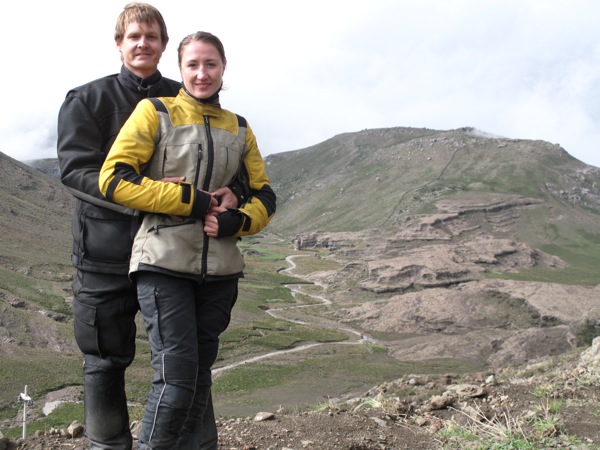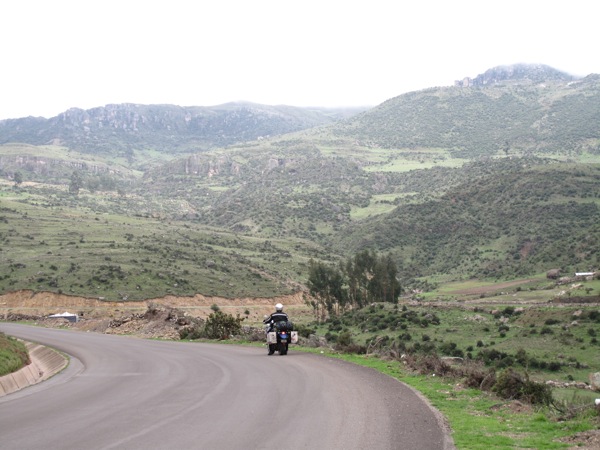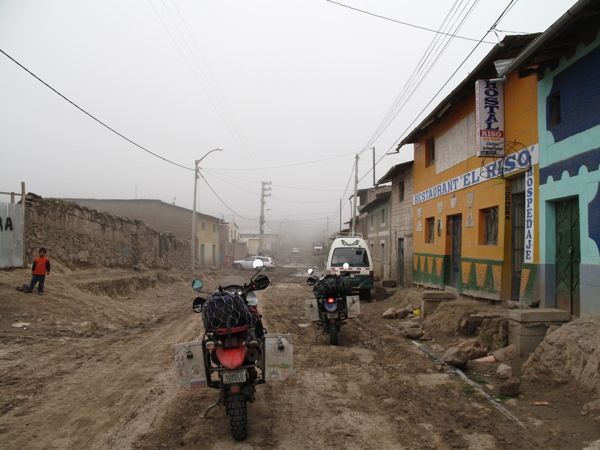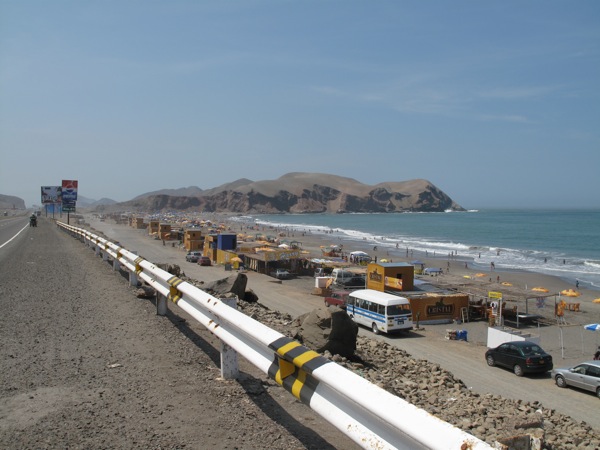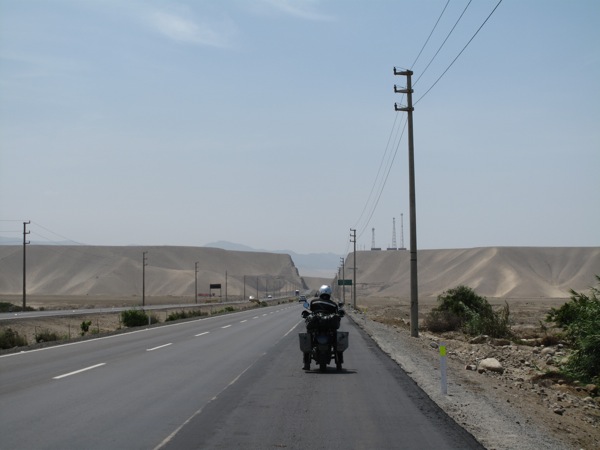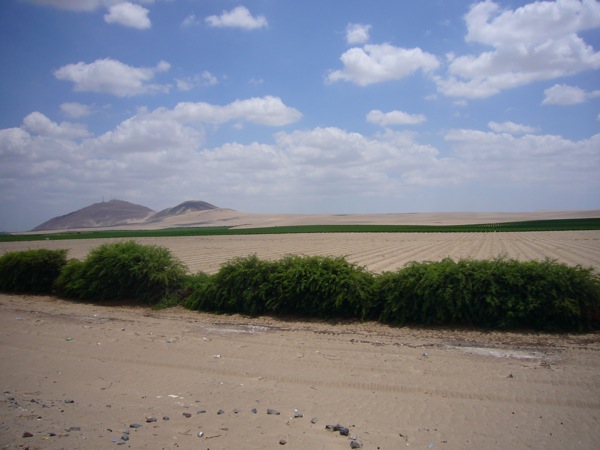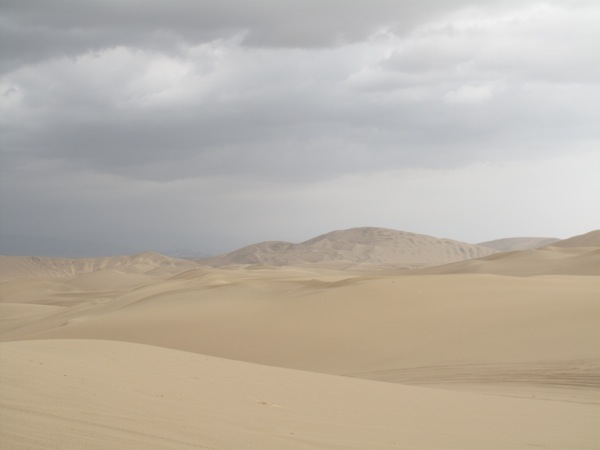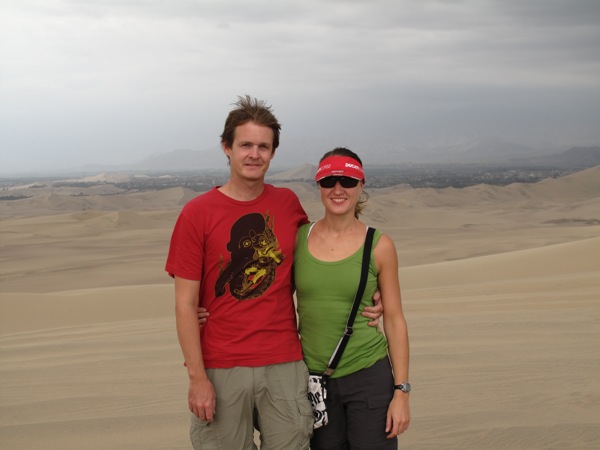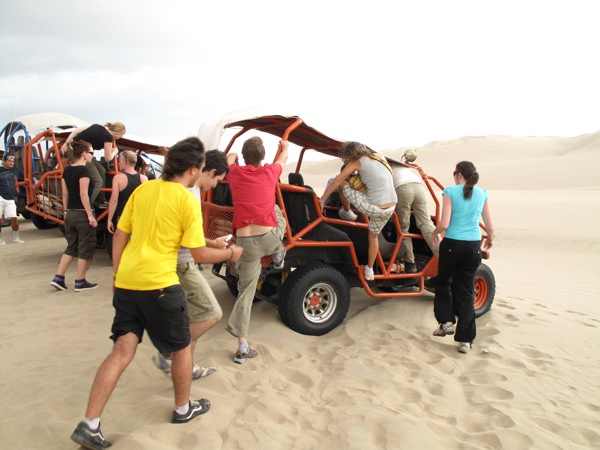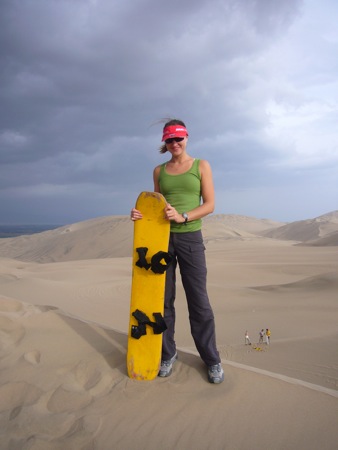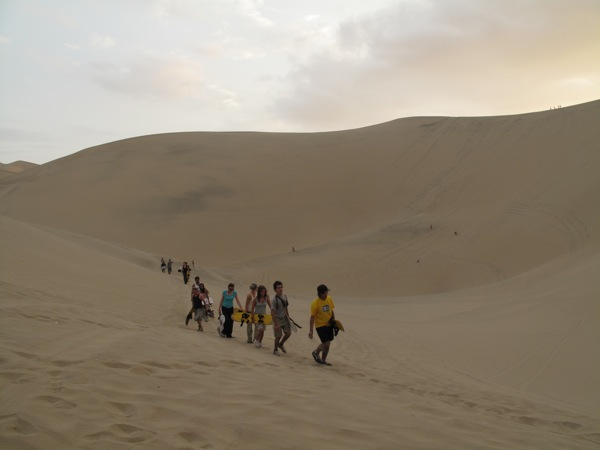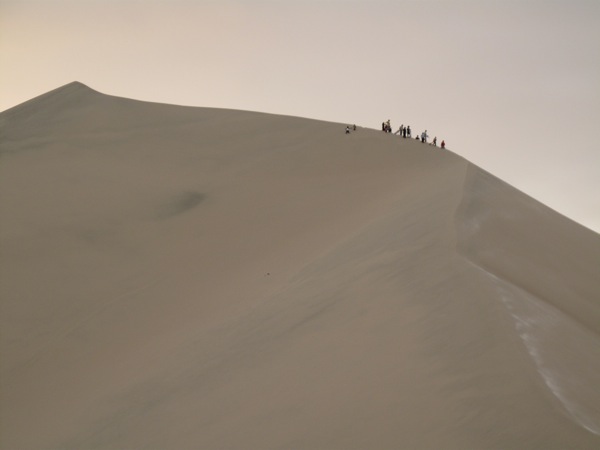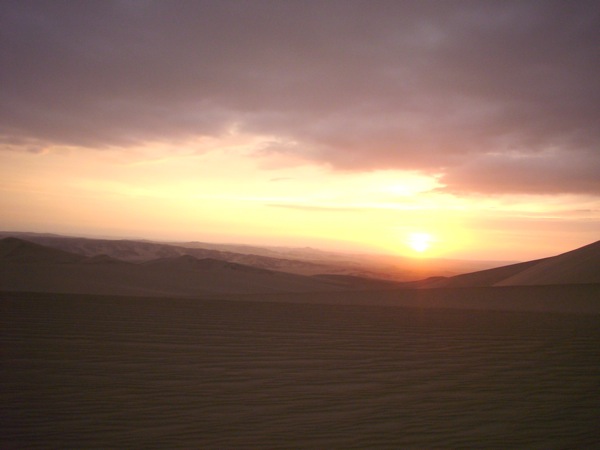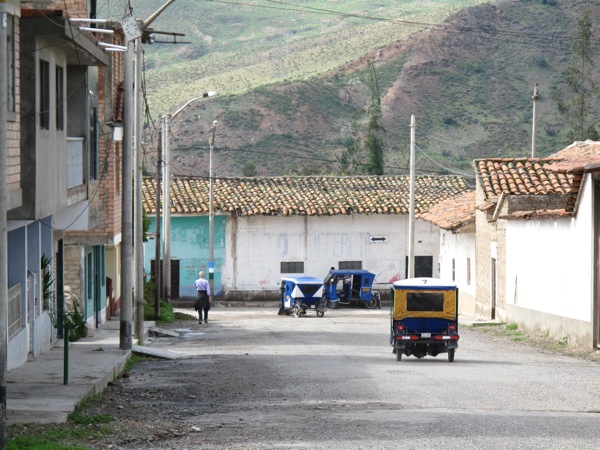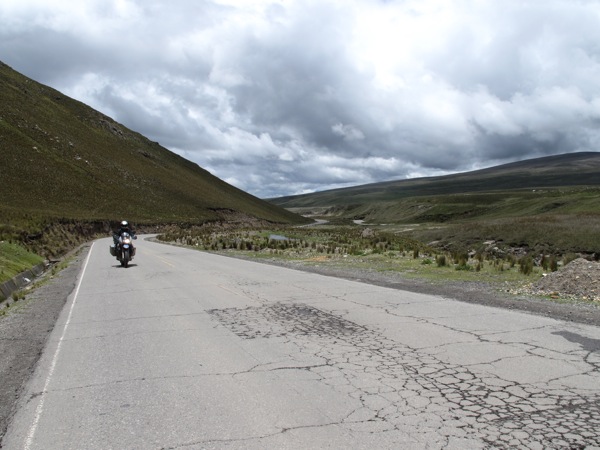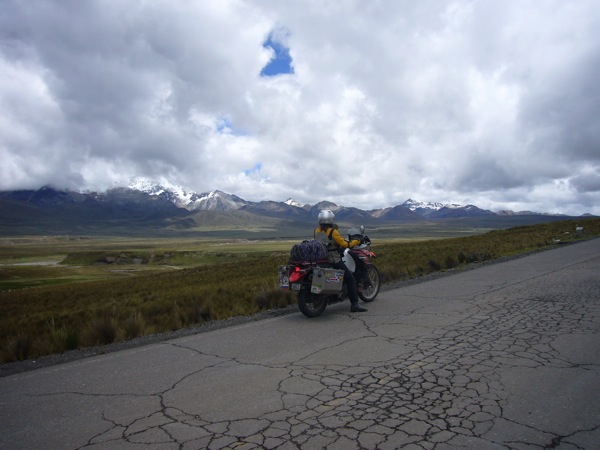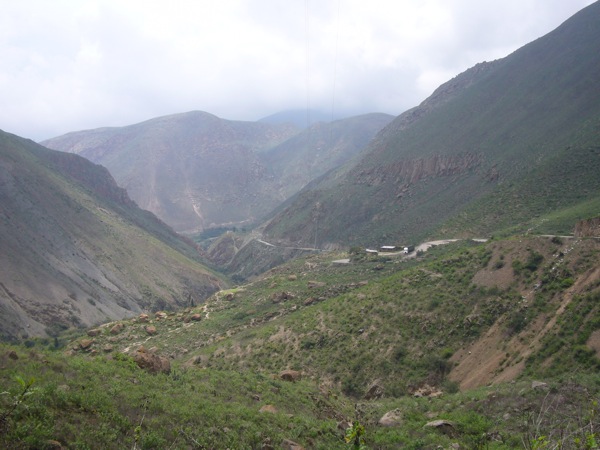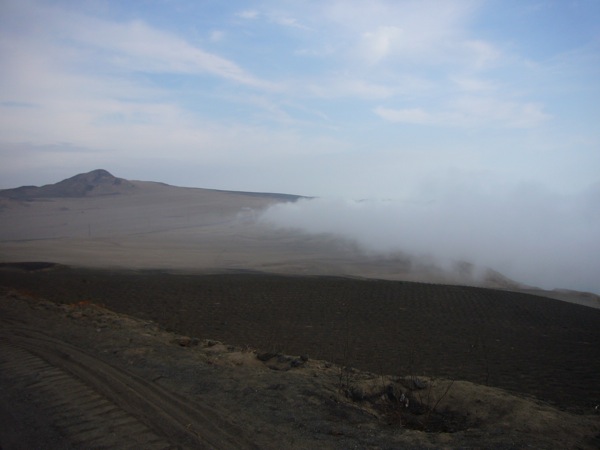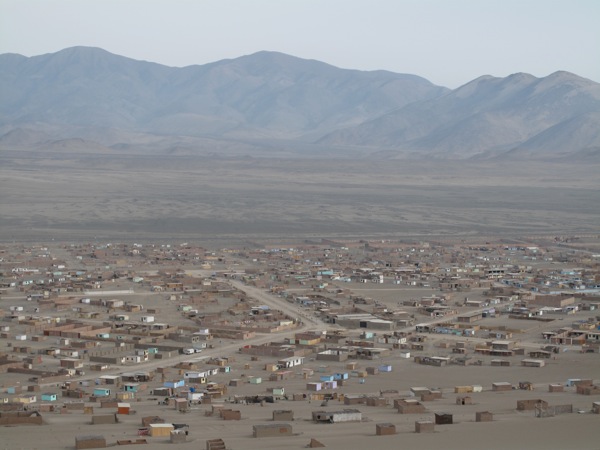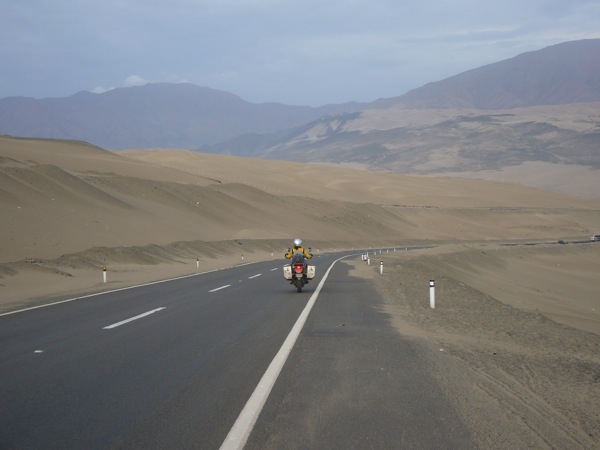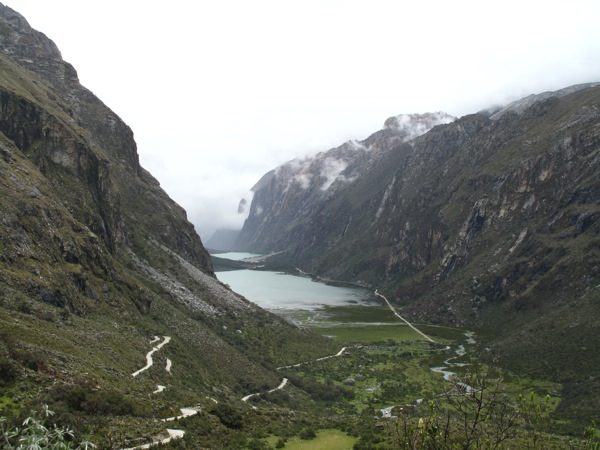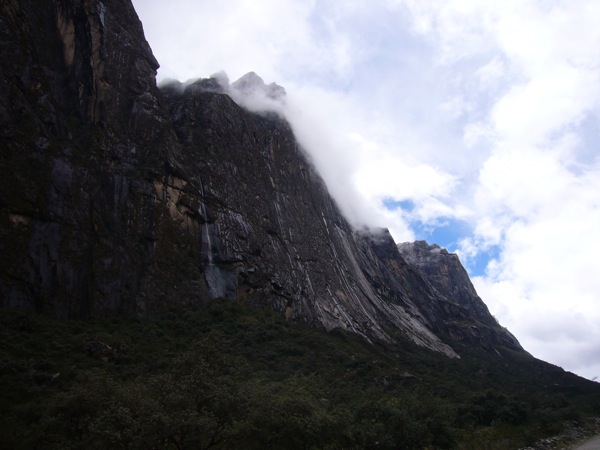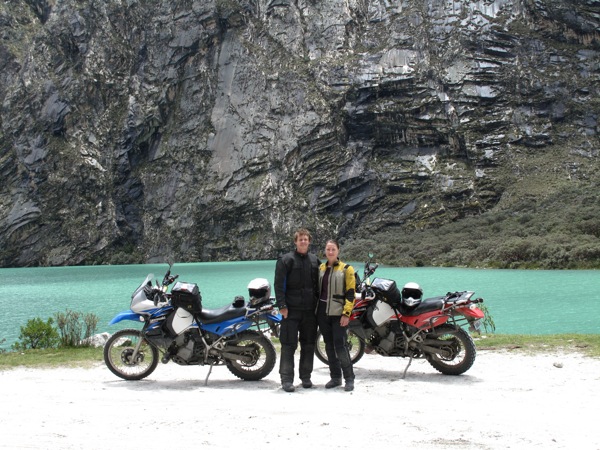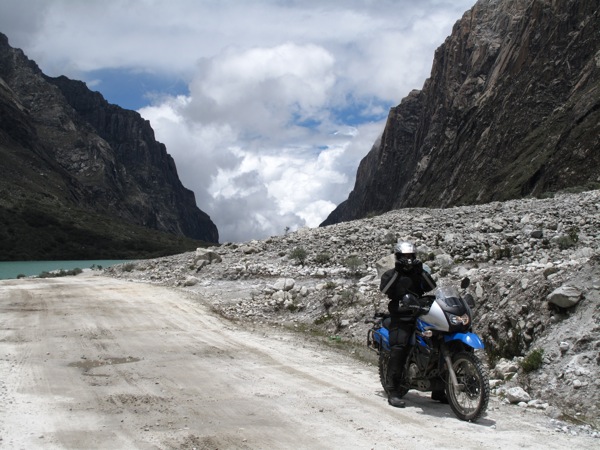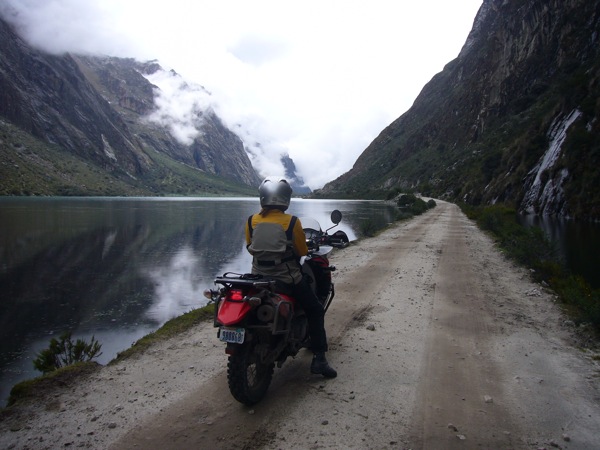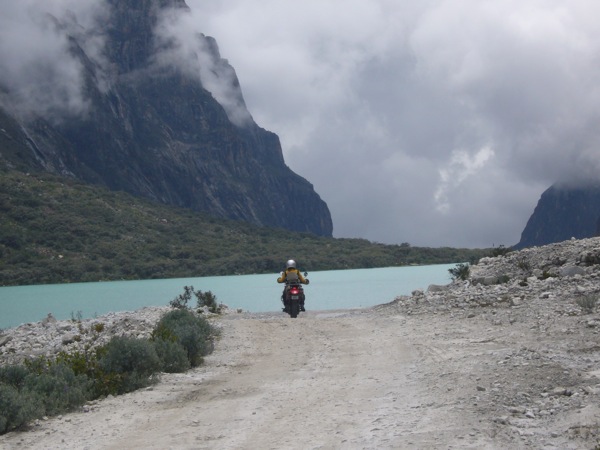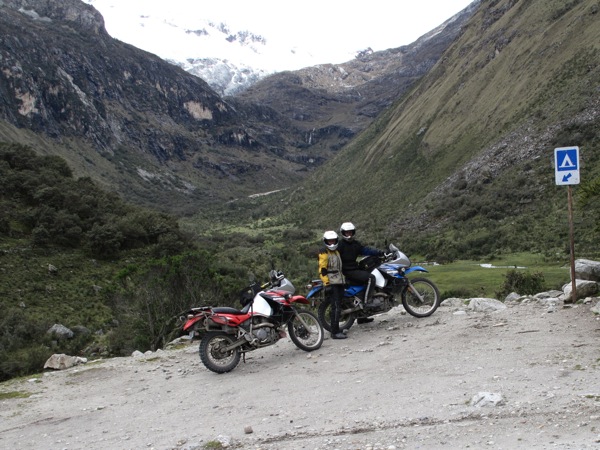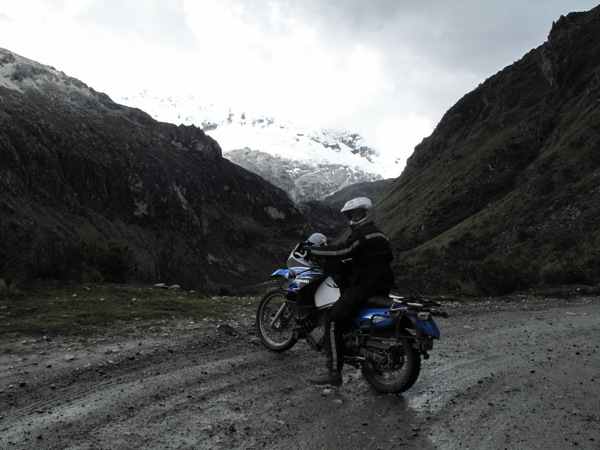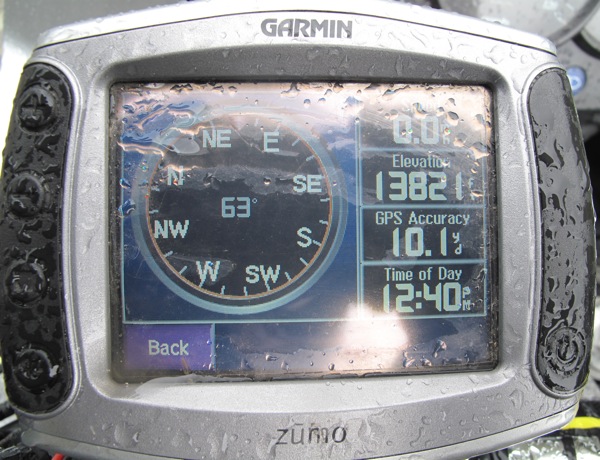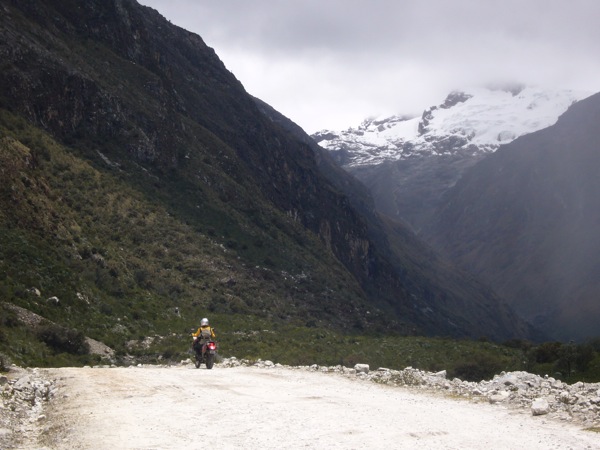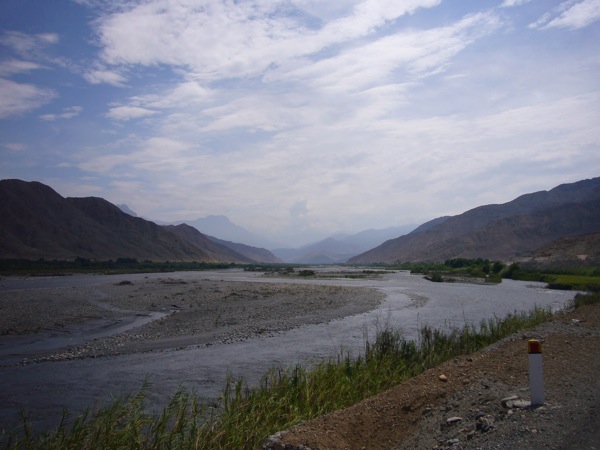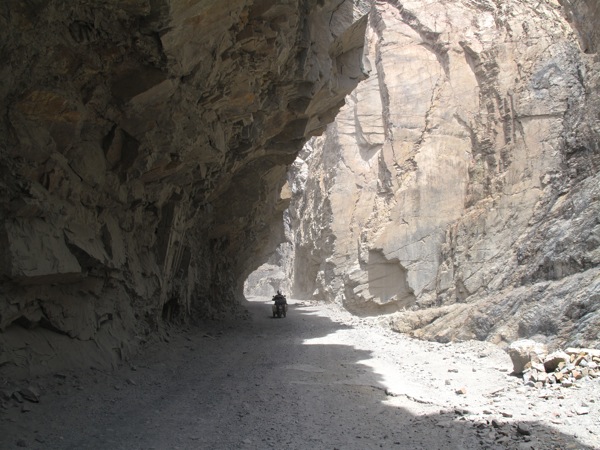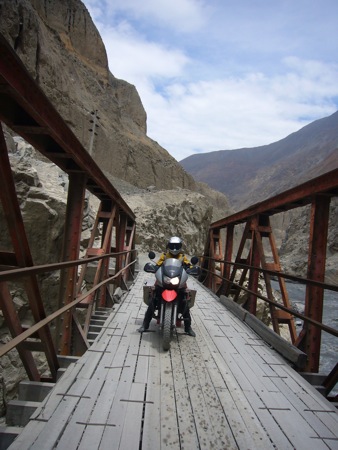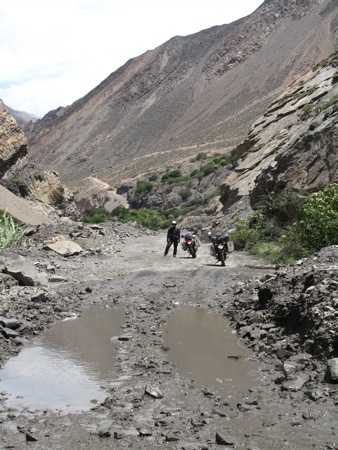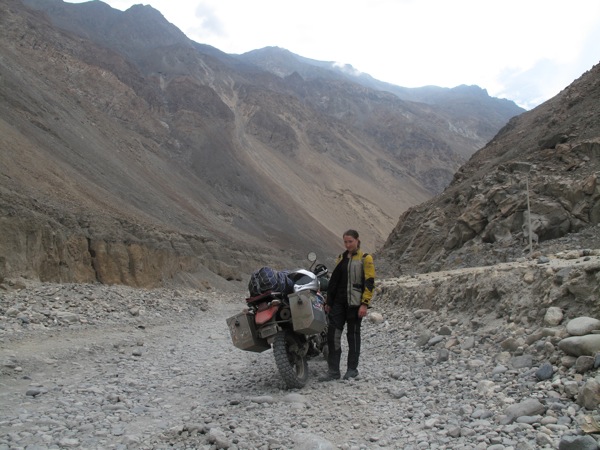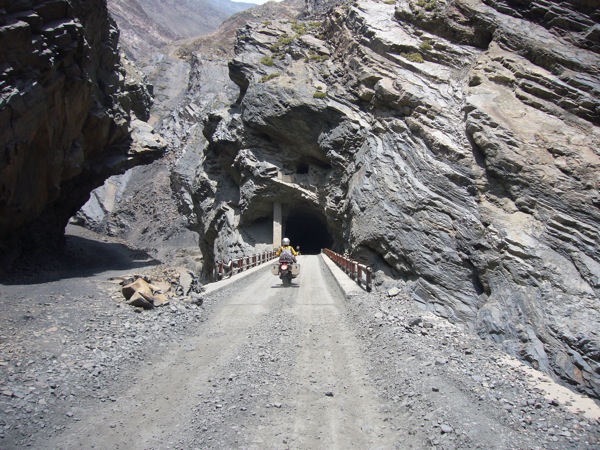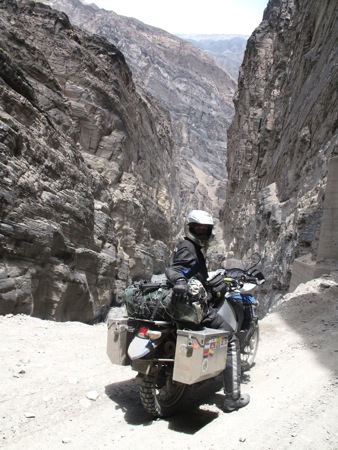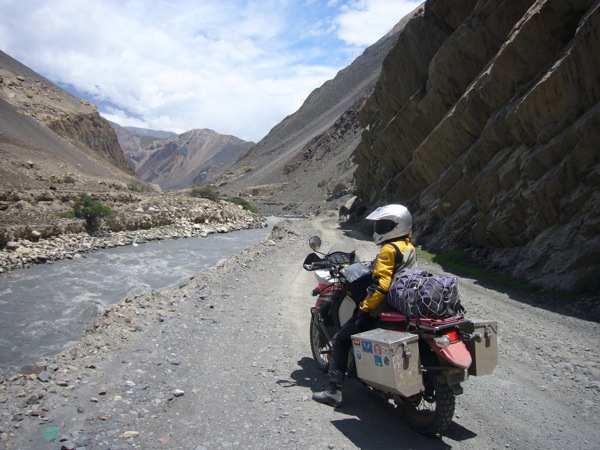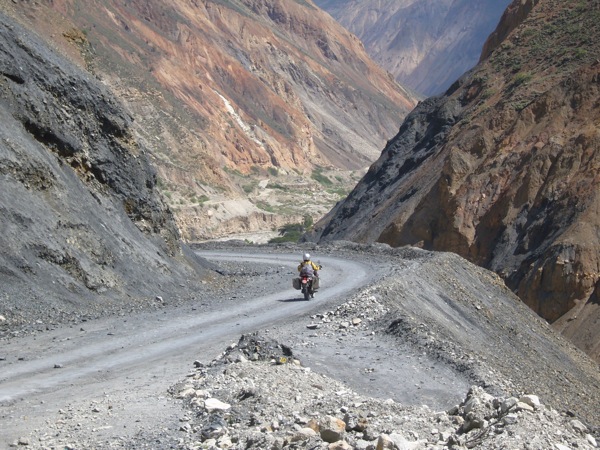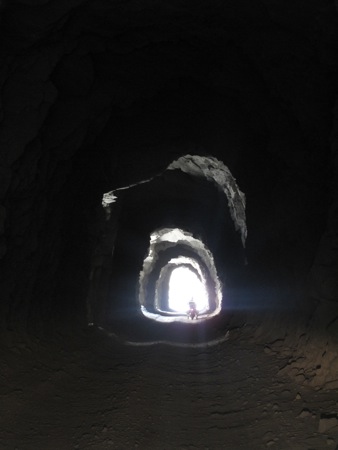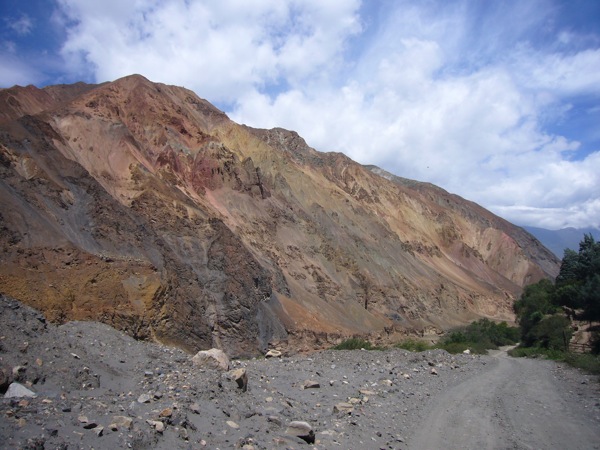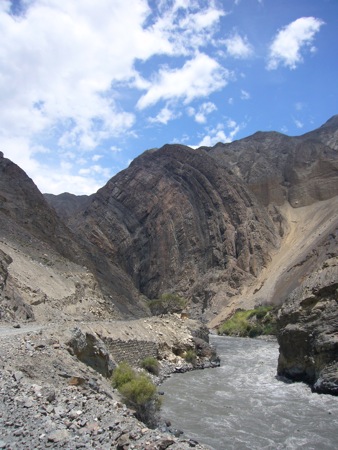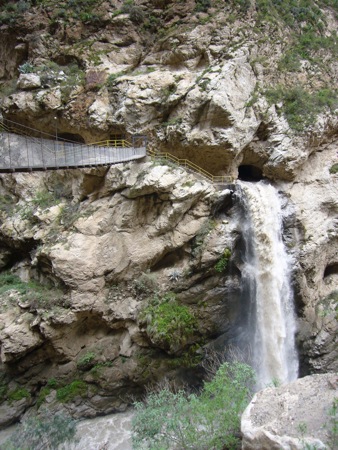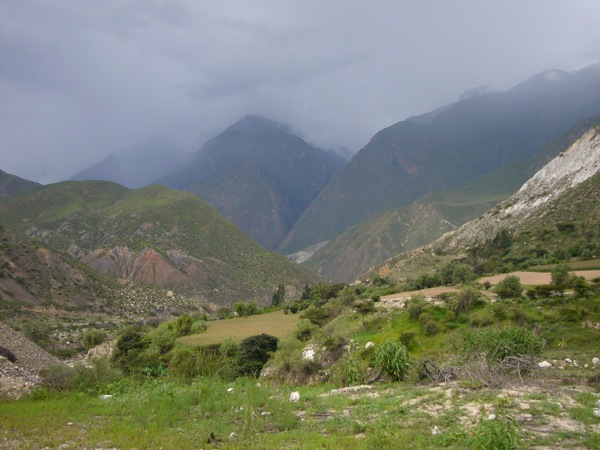Machu Picchu
- on 02.24.09
- Peru
- 2 Comments
- Digg
- Del.icio.us
Friday, February 13
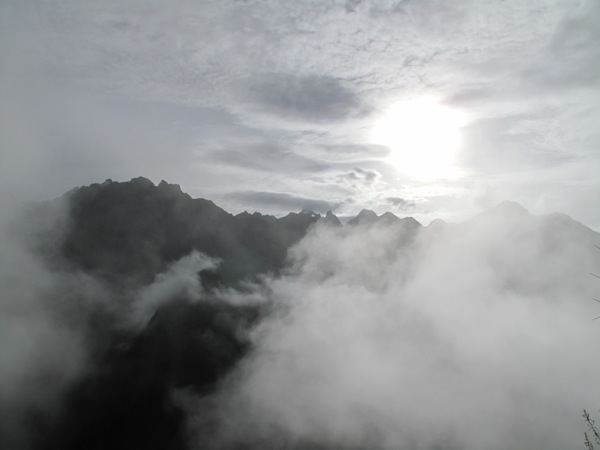
Our plan was to get up at 4:45 am in order to be one of the first ones in line for the bus to Machu Picchu. I woke up frequently during the night like a school girl anticipating her first day of classes. It worked out for the better because for some reason our alarm did not go off, and I woke us up at 5 am in a panic. We got dressed and gathered all our things in 10 minutes and by 5:15 am we were at the bus station. It was a dark, chilly and rainy morning. There were already about 200 people in front of us, so we figured we might have to be in the 10 am group to climb Wayna Picchu, which was a bit of a disappointment.
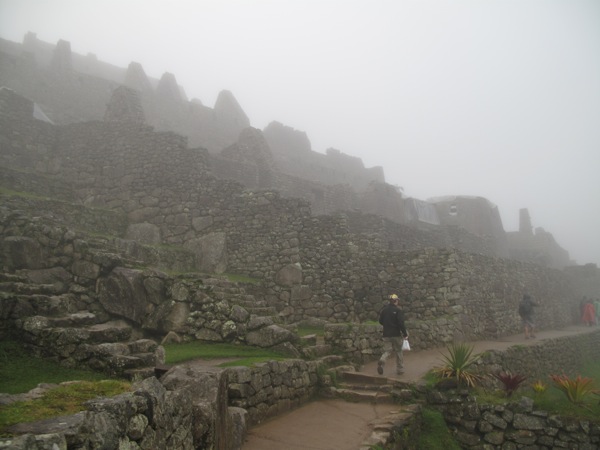
The first set of busses arrived, and took us to the Machu Picchu complex by the twisty road we saw from Putucusi yesterday. We were on bus number nine. The rain turned to drizzling and most people were wearing plastic rain ponchos. We bought a pair but ended up not using them as both of us had waterproof jackets (a must for this kind of trip). At the entrance gate everyone was in hurry, trying to get through and run to the opposite side of the ruins in a fog to get in line for receiving the number to climb Wayna Picchu. Overall it seemed like a dumb system – you spend the whole morning in a rat race wondering whether or not you’re gonna make it within the first 400 people. Some people were indiscreetly cutting in line, some trying to run you over, others were just plain rude. Why we couldn’t get the number at the main entrance to eliminate all this hassle I have no idea. You walk past the entirety of Machu Picchu, ignoring it while racing it to the line on the other side.
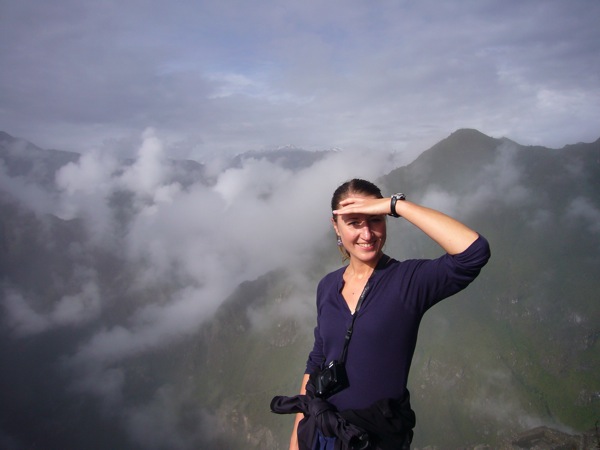
Finally, it was our turn to pick the number and to our huge surprise and after all this worrying we got 34 and 35 for a 7 am climb. Apparently most people were opting for 10 am, which it turned out was a much worse time to do the climb as the first group was coming down and it was crowded on the trail and at the top.
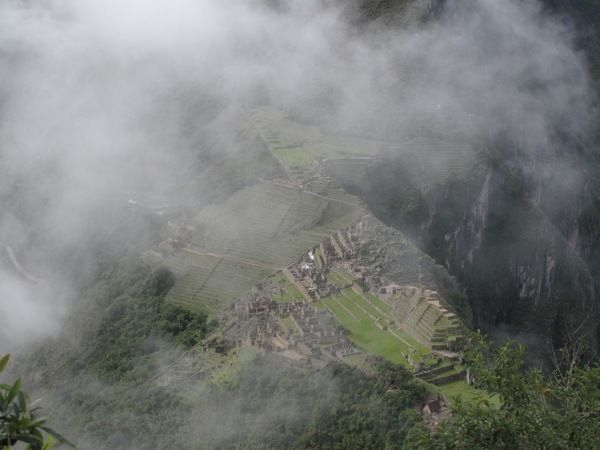
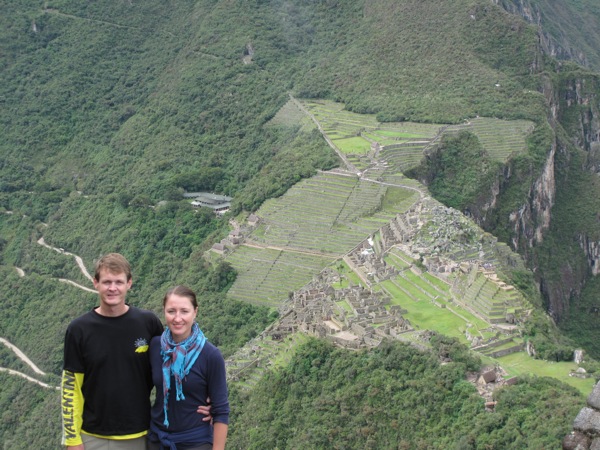
The climb was quite steep and exhausting. The fog was still pretty thick, covering most of the complex and the surrounding mountains. By the time we got to the top it started clearing up however. We were one of the first 10 people on the mountain and found a great spot on the rock with the perfect view of the ruins where we had our little picnic breakfast. In about an hour the place started getting really crowded. We milked our seats for as long as we needed and after finally having our fill of the view went on to exploring the rest of the mountain top, which had stunning views of the ruins, surrounding mountains, the river and the valley.
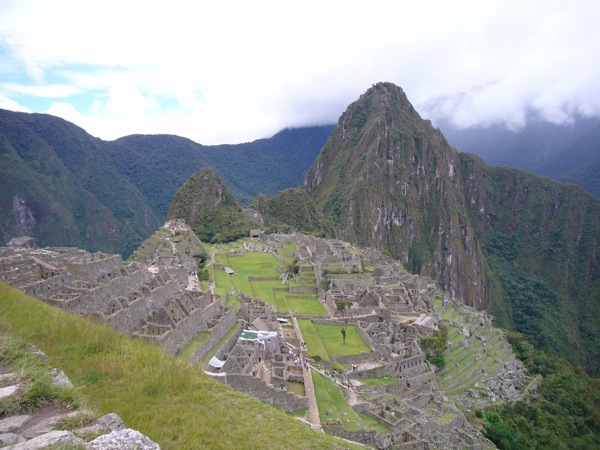
On this trip I brought with me some of my mom’s ashes planning to disburse them in special places along the way. Machu Picchu was one of the places I had in mind. We found a quite corner of the mountain and I let the ashes into the air, wind carrying them towards the sacred site of the Incas.
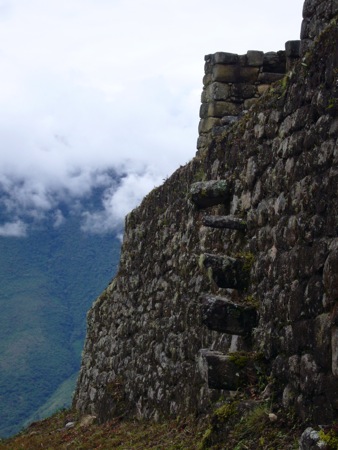
After wandering around Wayna Picchu, we started descending down, just in time for the 10 am group to be climbing up. We were extremely happy that we chose the 7 am group, it was so tranquil and special to be the first ones up on the mountain. The other plus was that the temperature had risen, and we were getting sweaty coming down, so it must have been worse climbing up.
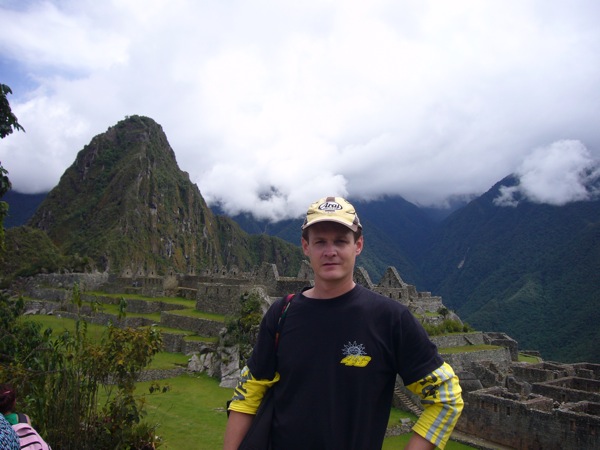
We had an arranged group tour at 11:30 am, but after seeing the size of the group and realizing that the guide was giving explanations in both Spanish and English, we decided to hire a private guide. We had learned previously on this trip that if the tour is in tour languages you get half the information in twice the time. It was about $35 for a two-hour tour and it was money very well spent.

He took us to the spot above the ruins, near the Funerary Rock that had the classic postcard view of the ruins.
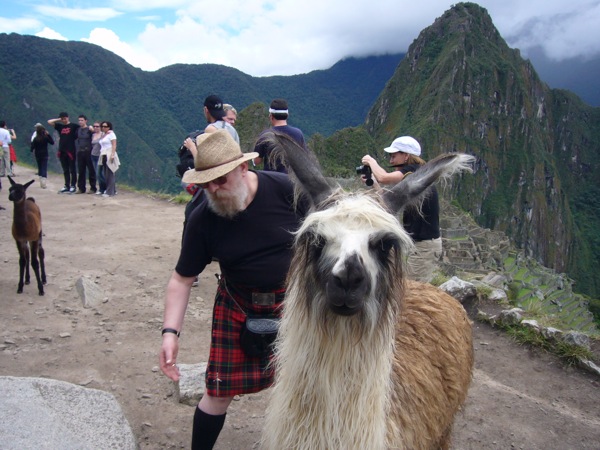
I was surprised to see llamas wondering around the area, as they usually prefer much lower and flatter territory. We found out from the guide that a group of Chilean scientists brought a couple of llamas with them a number of years ago and since then, the family grew to about 15 llamas.
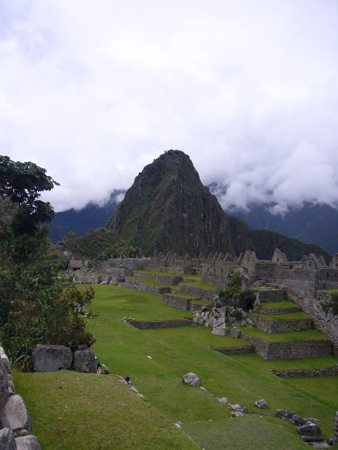
From that vantage point we could see clearly the full layout of Machu Picchu which had well-defined agricultural and urban zones. At its pick Machu Picchu was home to over 600 inhabitants. High class and priests lived separate from the working population.
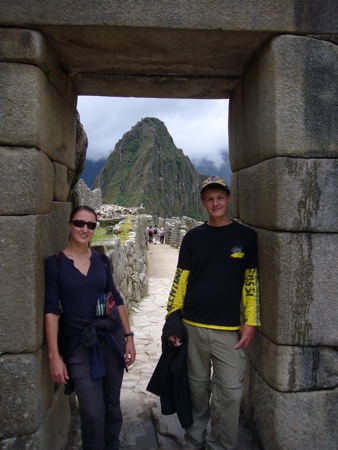
We then headed down to the main section of the ruins through the main entrance “gates” to the city.
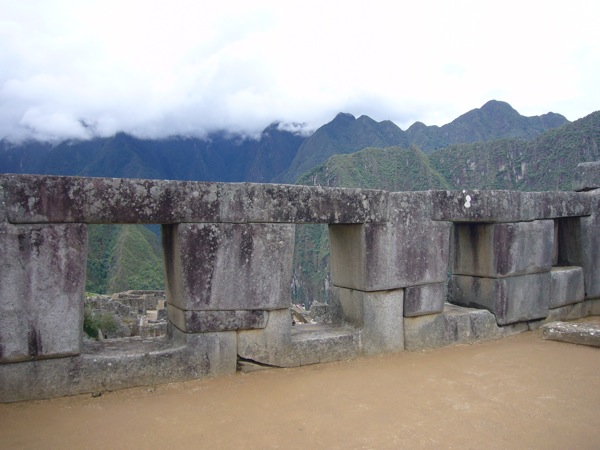
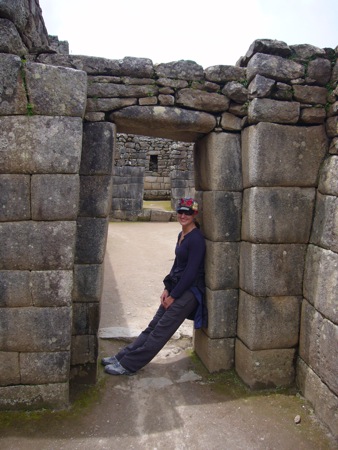
In the next two hours we visited the main points of interest of the ruins, such as the Royal Sector, The Temple of the Three Windows, Sacred Plaza, The House of the Priest, The Intihuatana (a sun dial that functioned as an astronomical and agricultural calendar), The Sacred Rock, The Central Plaza, and The Temple of the Condor.
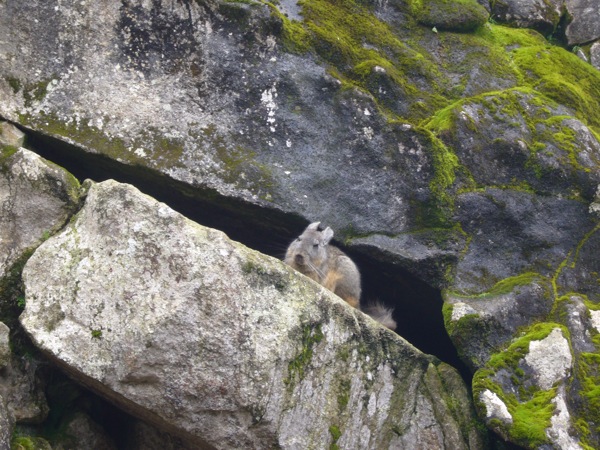
A few times we even spotted chinchillas, a cutesy mix of rabbit and squirrel native to the andes mountains, resting on the rocks.
We very much enjoyed our private tour and felt lucky to have had a very sunny and clear day. Normally at this time of year, it rains a lot and the guide told us that a few days before our visit the ruins were completely covered in a fog all day long. During the rainy season however they get less people, 1,000 vs 3,000 a day. So it was a win-win day for us. Sunny, warm and fewer people.
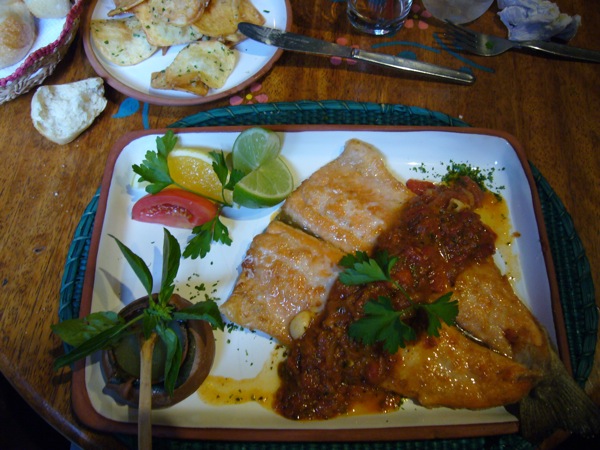
We took a bus back to Aquas Calientes and had 3 hours to kill before our train back. I went for a cheap massage while Matt enjoyed some computer time to himself. We then went to Indi Feliz Bistro restaurant for dinner, and it was one of the best meals we have had on this trip. The restaurant is run by a French expat and his Peruvian wife, serving a fusion of French and Peruvian cuisine, It is quite famous and is considered to be one of the best restaurants in all Peru. When dignitaries and important people come to Machu Picchu this is where they go for dinner. Our dinner was outstanding: a salad of avocado and mango with mustardy lime dressing, tomato basil soup in a clay pot, beef with pisco dressing and fresh trout with garlic sauce. I would be fantasizing about this dinner for days to come.
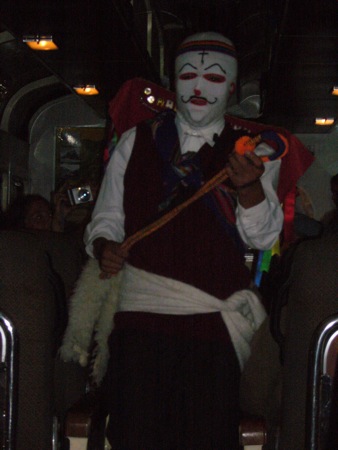
After dinner we caught our train back to Ollantaytambo. During the train ride the staff organized quite a spectacle. First, there was a guy dressed in traditional Peruvian costume running around the cabin to the sound of spooky native beats. Then they had a fashion show, modeling Alpaca sweaters to the music of ABBA, which was hilarious. It didn’t seem like anyone bought anything but it was a great entertainment piece.
At the Ollantaytambo train station we were met by our taxi driver and taken back to our Cusco hotel. Tomorrow we will spend another day on the town before heading east to Lake Titicaca.
